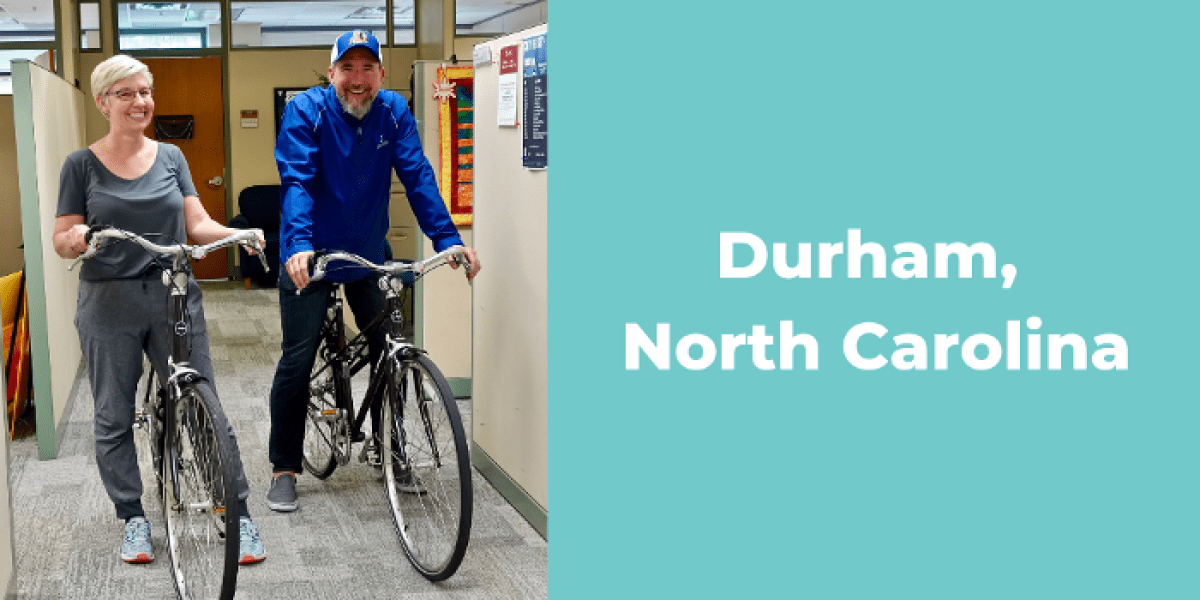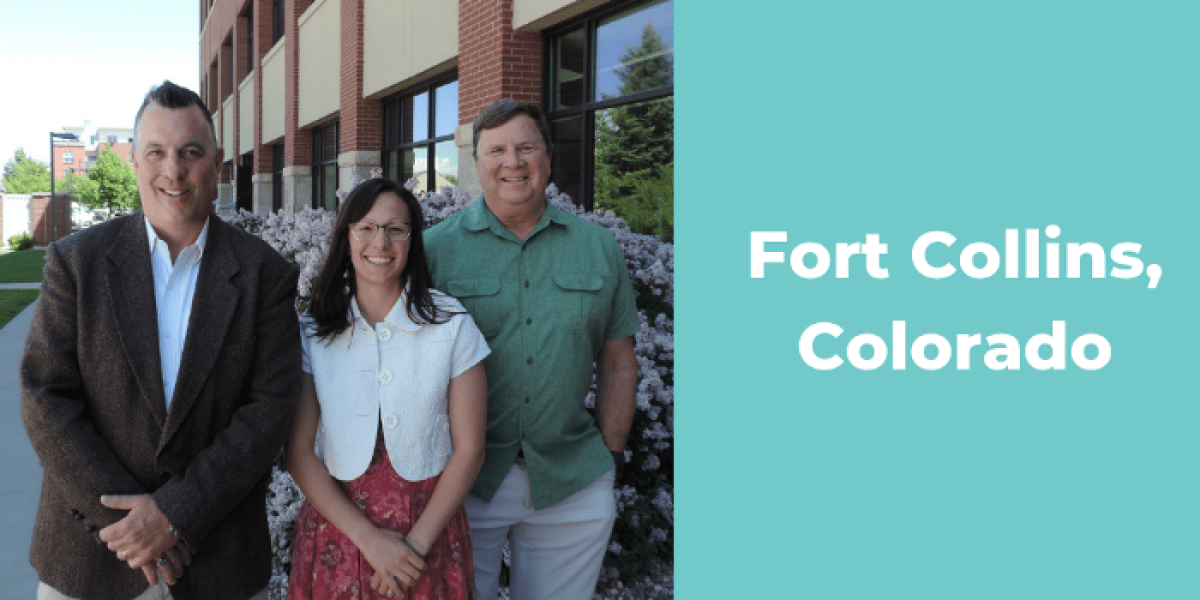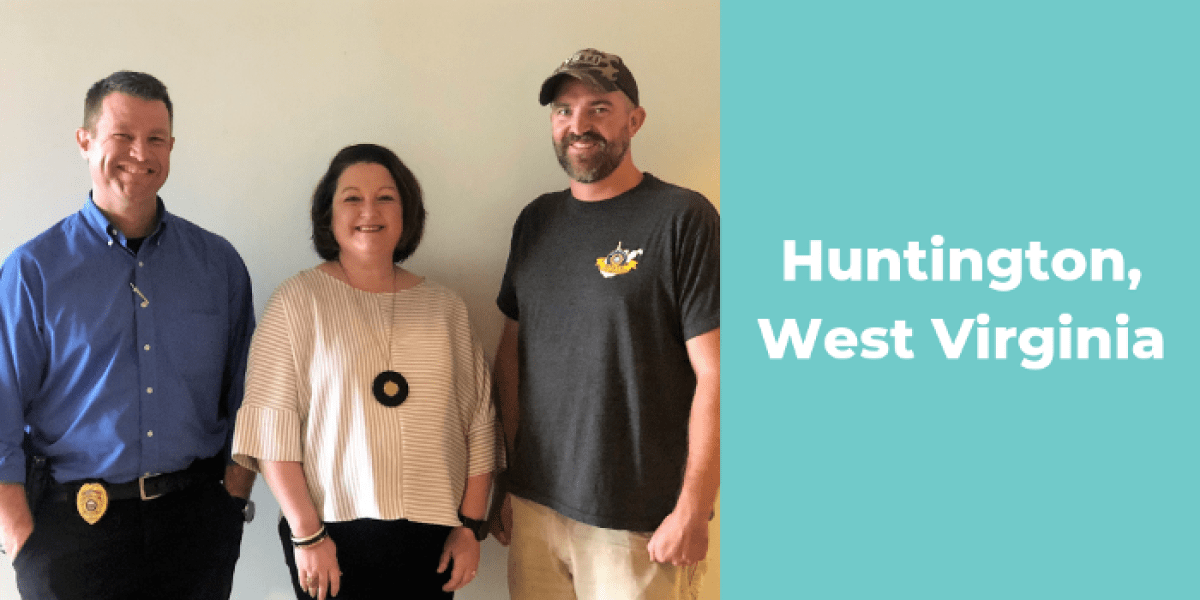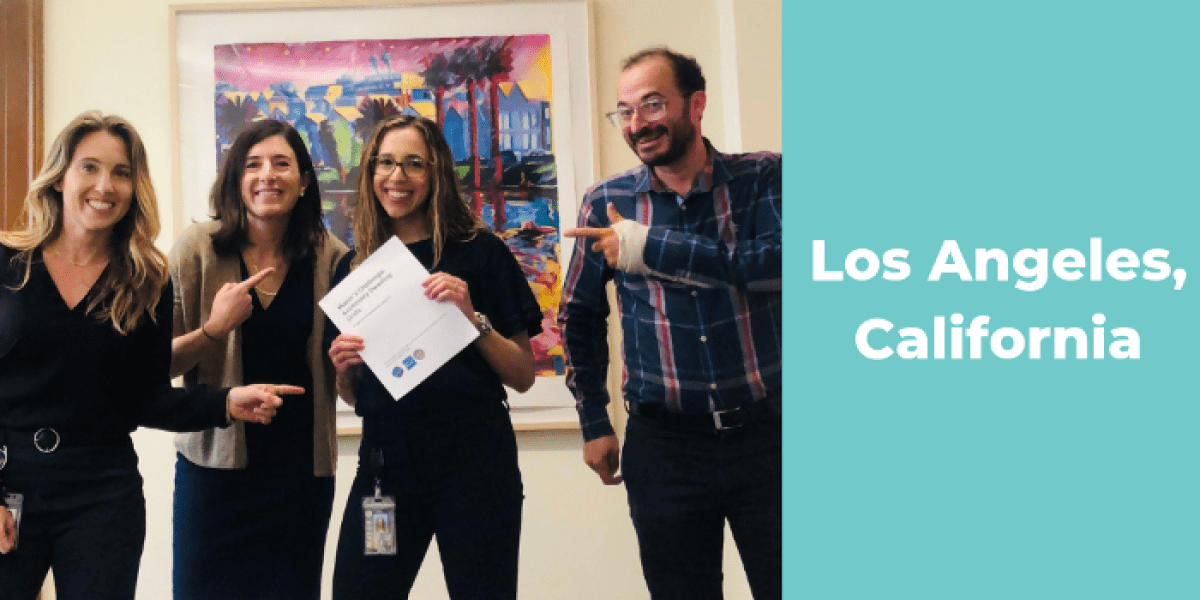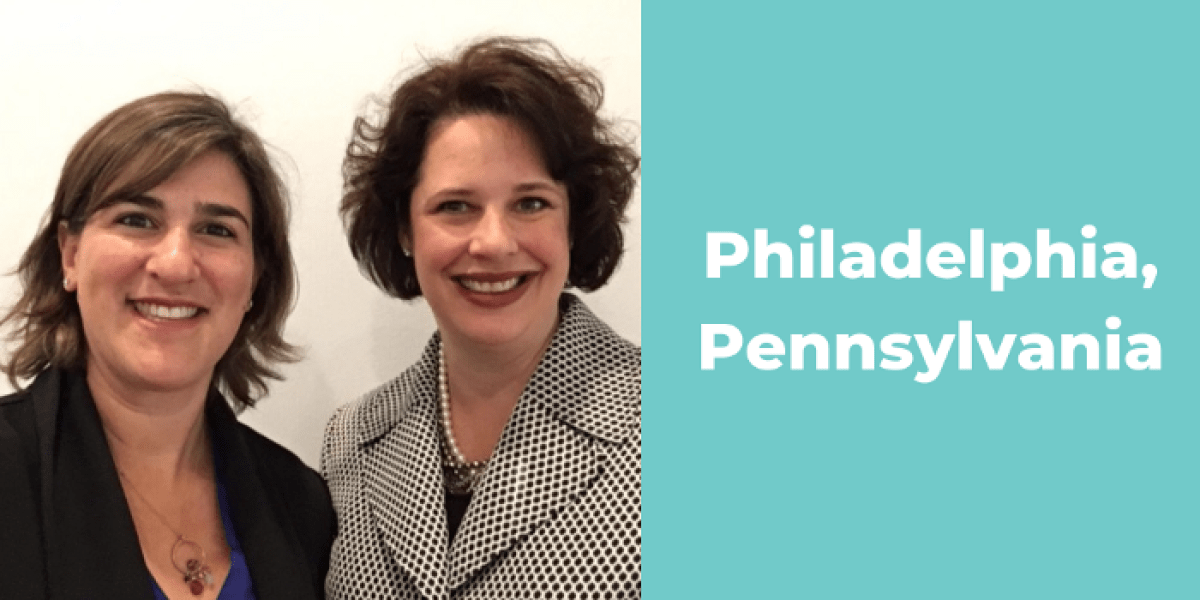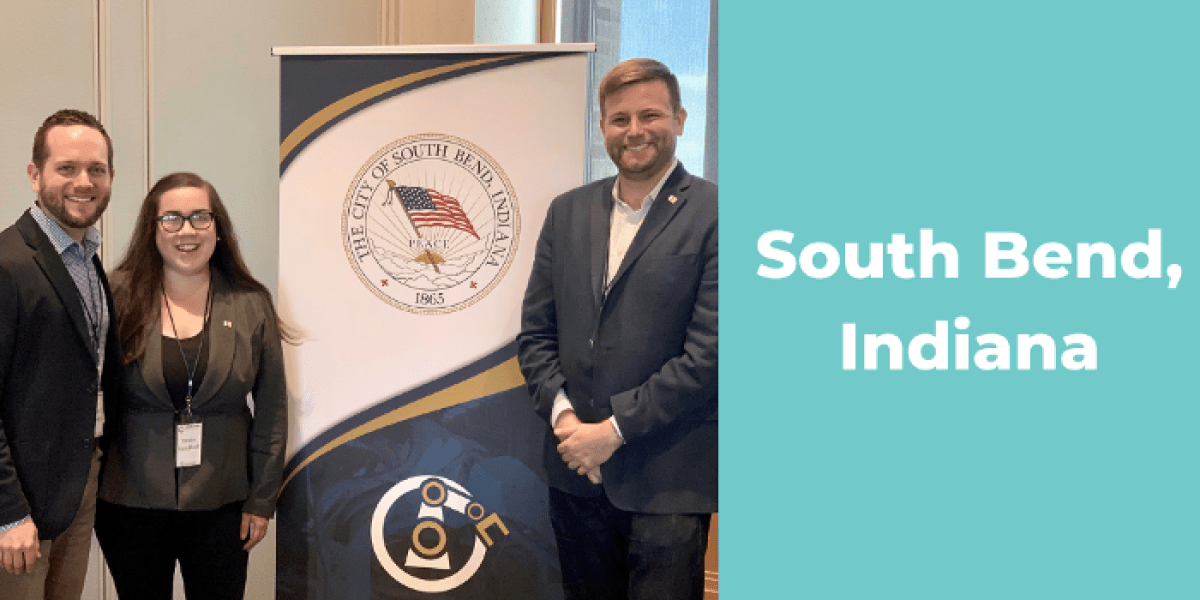Mayors Challenge: Meet the people driving 9 innovative projects forward

Innovation doesn’t happen by accident. Behind every bold idea and pathbreaking program in local government is a changemaker, and often teams of them, driving that work forward.
That’s very much the case in the nine U.S. cities that won last year’s Bloomberg Philanthropies Mayors Challenge. After proposing ambitious solutions for some of their toughest challenges, and testing out those ideas with residents, these nine cities each took home $1 million to implement ideas that, in some cases, have never been tried before.
As these cities staff up and get rolling, Bloomberg Cities caught up with the people leading these projects. Here’s what they had to say about their hopes for what they’ll achieve and what comes next.
Digging for detailed air-quality data
You probably know the temperature outside. But do you know the air quality? That’s critical information for people with respiratory conditions such as asthma. And, in a first-of-its-kind project, Denver is set to deliver that data using networks of sensors placed outside public schools.
“I’ve been in the air quality field for 12 years now, and this project is the most exciting one I’ve been a part of,” said Michael Ogletree, who’s leading it for the city’s Department of Public Health & Environment. “Working with innovative industry leaders to develop both the hardware and the software, and then using that data to address health impacts in Denver’s youth population has been rewarding.”
Ogletree’s team is preparing for a project kickoff at the start of the school year this fall. Air sensors and information dashboards are being installed in 10 schools, along with programming to educate students, parents, and administrators on how to use this new air-quality data to make healthy choices about when to stay inside. One goal is to make this fun for students — for example, by hosting art contests to design road signs to discourage drivers from idling outside schools.
“I couldn’t ask for a better project to hit everything I’m passionate about,” Ogletree said. “Air quality, technology, and kids!”
Testing ways to lure drivers out of cars
Traffic and parking are manageable most days in downtown Durham. But with 20 new people moving to the city every day, that won’t be the case for long. Heather McGowan, Tom Devlin, and a team in Durham aim to keep the city ahead of that curve — slashing solo car commutes by 5 percent by 2021 — by using behavioral “nudges” to encourage drivers to walk, bike, carpool, or ride transit to work.
In partnership with researchers at the Duke University Center for Advanced Hindsight, they’ll test the efficacy of several strategies, such as incentives for carpooling and a cash-prize sweepstakes for people who ride the bus. What they find will be relevant to mid-sized cities across the country, said Devlin, a transportation planner with the city. “Other cities will be able to learn from us how to apply behavioral science strategies to transportation demand management,” he said.
Project Coordinator McGowan said the Durham team is excited to collaborate with employers, researchers, and transit experts, and to test their strategies this fall with employees of the city and a local university. “Co-creating and iterating prototypes with our downtown community allows for plenty of improvisation,” she said. “This aspect of innovation enthuses our team and keeps us motivated.”
Tackling rental housing’s energy-efficiency problem
In the drive for energy efficiency, rental properties pose a special problem. Landlords lack an incentive to invest in insulation or new windows, for example, because they usually don’t pay the electric bill. And while tenants like lower utility bills, they’re not going to make big investments in a building they don’t own.
The Fort Collins Mayors Challenge team is tackling this problem head-on. Led by Sean Carpenter, Terra Sampson, and Kim DeVoe, they’re building a model that streamlines the finance process for landlords to make upgrades to properties for low- and middle-income residents. And as they refine the model, they’re trying to create a plan that will be easy for other cities to replicate.
“What we’ve learned is that rental property owners will, in fact, make energy retrofits, if the process is easy, quality control is high and if they believe that it makes good business sense,” Carpenter said.
The Fort Collins project also has a research goal: to better understand the link between energy efficiency and indoor air quality. The team has partnered with Ellison Carter from Colorado State University to study how energy upgrades can improve health and wellbeing. This program “is not about the houses,” Carpenter said. “It’s about the people living in the houses.”
Creating a ‘virtual power plant’
Georgetown, a city of 70,000 just outside of Austin, is one of the fastest growing cities in the country. To meet residents’ surging demand for electricity, the city is creating a “virtual power plant” by linking rooftop solar panels on homes and businesses to large backyard storage batteries. Other cities interested in taking charge of their energy future are watching the project closely.
“If this idea works,” said Assistant City Manager Jackson Daly, ”it would add a new opportunity for community-owned utilities to build reliable and resilient microgrids that diversify their energy portfolio, increase and expand service, and mitigate some of the risk and costs associated with energy transmission.”
Georgetown is now working on hiring a dedicated project manager and finalizing plans, Daly said. Initial efforts will involve bidding and awarding supplier contracts, as well as securing support from individuals to host city-owned solar panels and batteries on private property. “Like all cities,” Daly said, “we know in this radically changing world we need to be agile and innovative to remain sustainable, competitive, and resilient.”
Encouraging wellness for first responders
The strain of responding to opioid overdoses is taking a toll on Huntington’s police and fire forces: First responders are more likely to die by suicide than in the line of duty. The city is addressing this by building a system of wellness and self-care that aims to be a model for first responders everywhere as they cope not only with drug deaths, but also school shootings, natural disasters, and other traumas.
“We are excited that our project is driven by first responders,” said Amy Berner, the city’s program manager. Leading the effort within the Police Department is Lieutenant Phil Watkins, and within the Fire Department is Lieutenant Steve McCormick; each has recruited a core group of eight to 10 colleagues to help develop the program. “Buy-in by our first responders is the key to our success,” Berner said. “They are essential to building the model, giving feedback, and to the testing and learning aspect of the program.”
The first step is launching a website and app where first responders can register for trainings and wellness activities and receive reminders. These tools will also allow for a flow of information on the project and user feedback. “We hope to build a roadmap for Huntington and other cities across the nation,” Berner said, “to be more proactive in the self-care of our first responders.”
Pursuing a backyard housing solution
Can homeowners be part of the solution to ending homelessness? Los Angeles thinks so. The city’s Mayors Challenge plan is to tap into growing interest locally among homeowners in building small backyard houses to generate rental income — and then offer them incentives to rent those units to people who are facing housing hardship.
“The part of this project that energizes me the most is helping stabilize the lives of vulnerable members of our community by providing them with a place to live,” said Becky Gross, who came over from the L.A. Homeless Services Authority to manage the project with the city’s innovation team. “I am extremely inspired by the high number of inquiries we received from homeowners across the city who want to help resolve the homeless crisis by offering space on their property to house someone in need.”
An early priority will be to identify partners who can bring different perspectives to the project and help build support in the community. “Our hope,” Gross said, “is that other cities will be able to learn from our experience on how to capitalize on a trend that is already occurring and use it for social good.”
Using virtual reality to engage residents in planning
Change can make people nervous. That’s especially true if your city is growing as fast as New Rochelle is, with developers redrawing the downtown skyline with every turn. The city is responding by offering residents a new way to visualize what some of that change will look like — and, importantly, offer feedback before it is built — using virtual reality (VR) technology.
The next step is to build the web-based platform, which will provide residents both a better-than-ever-view of proposed developments and a place to provide feedback directly to the city. Once completed, New Rochelle plans to make the technology open source so that other cities can use it.
The New Rochelle team hopes to get more residents involved in the planning process, and in a more constructive way than you’d typically find at city planning hearings. As Rebecca Lazaroff, the city’s partner at the digital design firm Crafted New York, puts it: “Our hope is that this project will smooth the way for citywide solutions where communities and developers become partners.”
Changing the approach to juvenile arrests
When children in Philadelphia are arrested, even for low-level offenses, they’ve typically been locked up with adults to await booking in a concrete cell. The city’s Mayors Challenge project aims to create a more appropriate intake experience for kids, one that is trauma-informed and youth-centered.
It’s not just about creating a warmer physical space. Staff at the Philadelphia Juvenile Assessment Center will be more proactive about linking families to community-based services, and diverting low-risk youth out of the juvenile justice system. Unlike other reforms that focus only on minor offenses, Philadelphia is changing its approach to all levels of juvenile arrests, including both misdemeanors and felonies.
Project Manager Lisa Varon, who’s worked for years in the juvenile justice area, said it’s “one of the most tangible solutions in policy and practice” that she’s seen. “It will have immediate and direct impact on youth and their long-term outcomes,” she said.
The project represents a collaboration of many departments across local government and the courts, including the Police Department, where Project Director Rhonda McKitten is a Stoneleigh Fellow after working almost 20 years as a juvenile public defender. “I’m most excited about keeping more children out of the formal court system,” McKitten said. “It will allow kids to learn from their mistakes without the stigma of a court record or probation supervision.”
Helping shift workers get to jobs
Holding down a job in South Bend can be tough if you don’t own a car, especially if you commute at off hours when the buses don’t run. It’s a problem for low-income workers, who fear getting fired for missing a shift. And it’s a problem for employers, who wrestle with high turnover.
The city’s Mayors Challenge team will address this by partnering with employers to subsidize rides through new on-demand transportation services. The idea is to turn transportation into an employee benefit — one that, they hope, will pay for itself in the form of a more stable and productive workforce.
“The mobility space is being rapidly redefined,” said Aaron Steiner, the city’s newly hired director of mobility innovation. “A few years ago, a program like ours leveraging options like ridesharing or bikesharing wouldn’t have been possible in South Bend.”
To get started, Steiner and his team are re-engaging with local employers who participated in previous pilots of this solution, and determining which transportation modes and providers make sense to include in the first project’s first phase. “It’s hard to predict what new solutions will enter the market in the next few years,” he said. “We have the chance to test some of these emerging solutions and see what works. If we create a model that works in South Bend, we hope it can be replicated elsewhere.”

